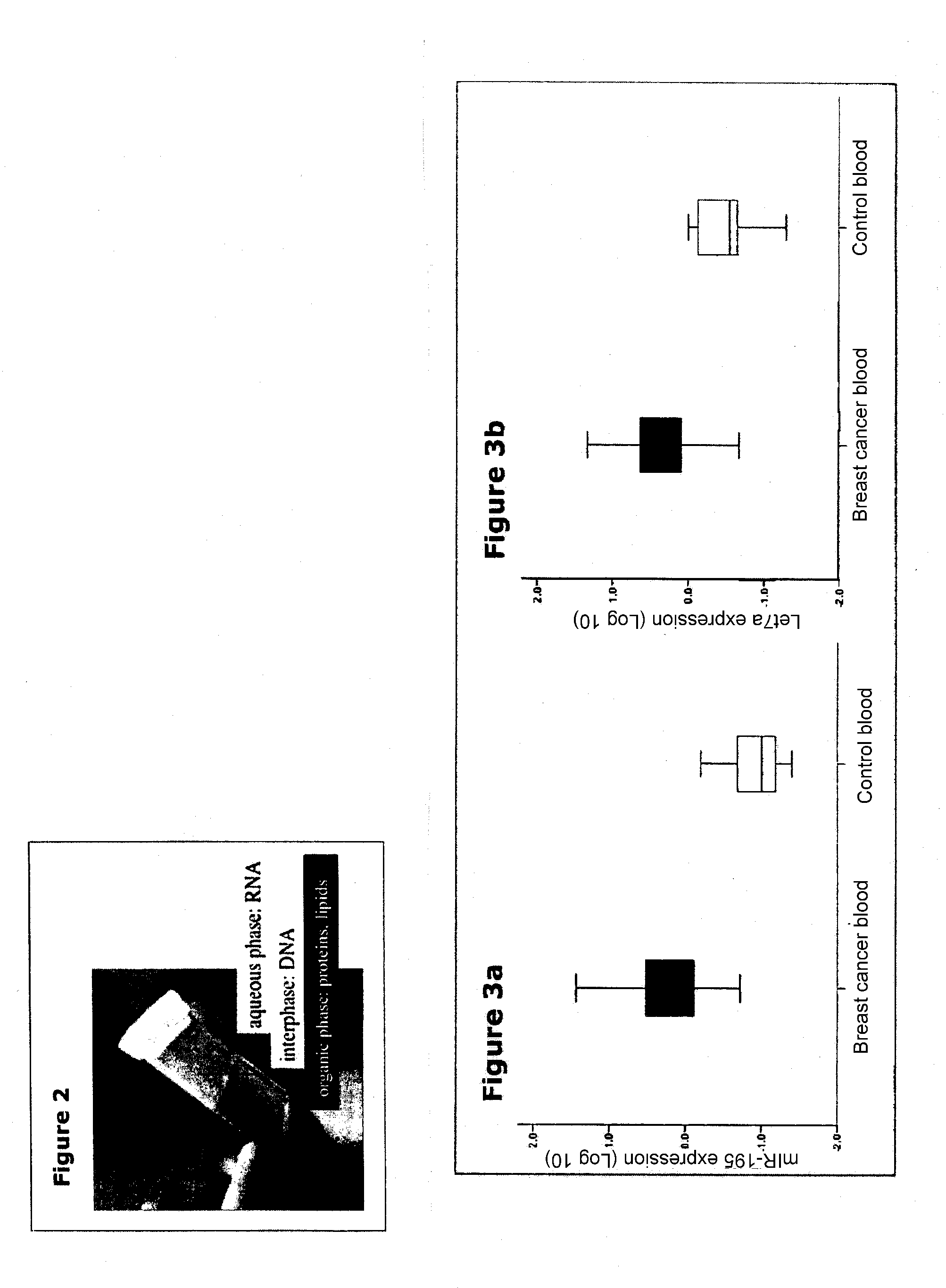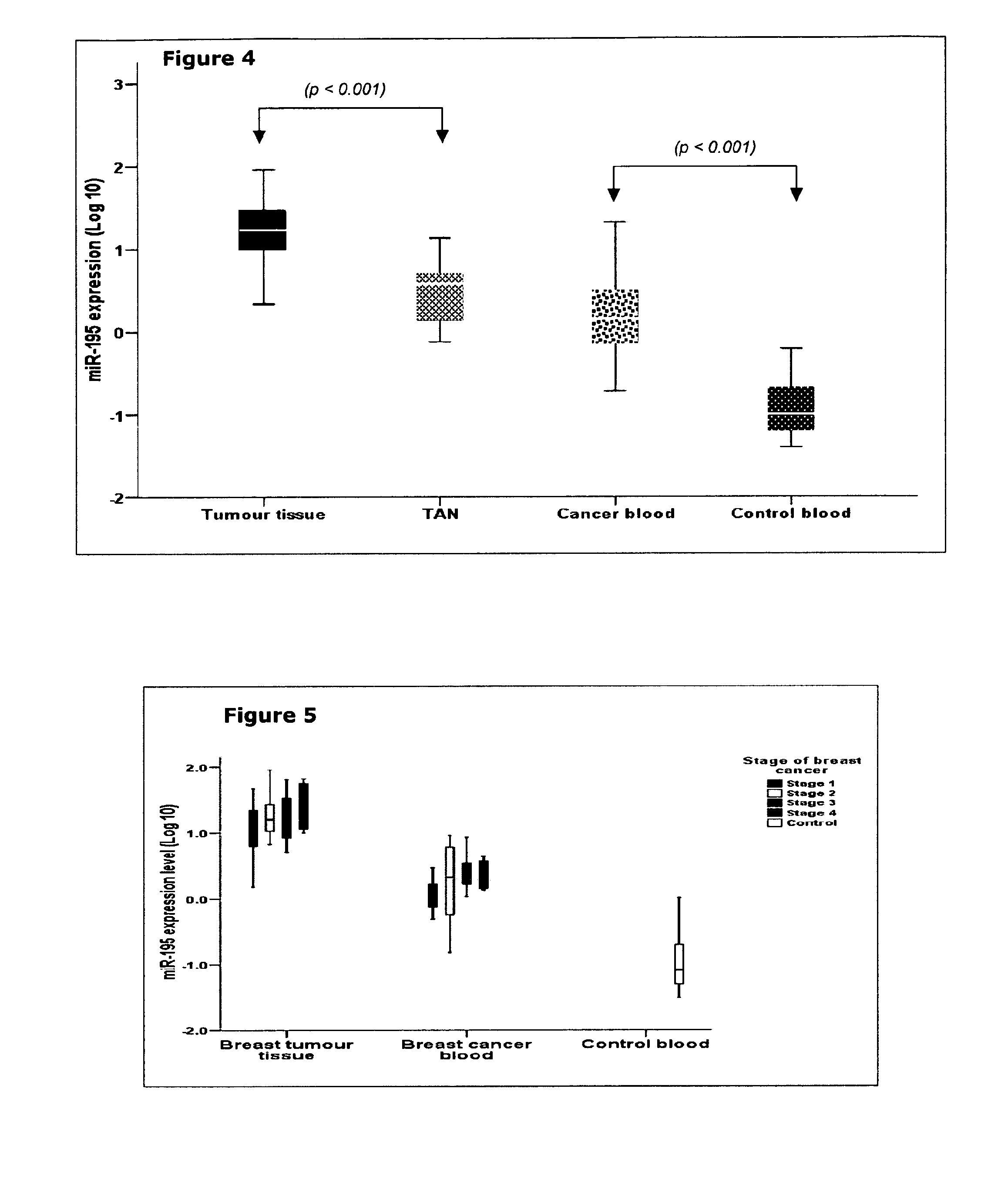Detection and quantification of microRNAs in the circulation and the use of circulating microRNAs as biomarkers in cancer
- Summary
- Abstract
- Description
- Claims
- Application Information
AI Technical Summary
Benefits of technology
Problems solved by technology
Method used
Image
Examples
Embodiment Construction
[0114]Small RNAs in the circulation were detected as follows:
[0115]1. LYSIS: 3 ml TRI Reagent+200 μl BAN+1 ml whole blood
[0116]Ratio of reagent volume to sample volume should always be 3:1
[0117]In a 5 ml clear tube place 3.0 ml of TRI Reagent BD supplemented with 200 l of BAN (bromoanisole) and 10 μl of Polyacryl Carrier. Add 1 ml of whole blood.
[0118]2. PHASE SEPARATION: homogenate
[0119]Split the total volume (>4.2 ml) across 2 round bottomed 2 ml tubes and centrifuge at 14,000 rpm for 15 minutes at 4 C.
[0120]It is important to separate phases in the cold (4-10° C.). Centrifugation performed at elevated temperatures may sequester DNA into the aqueous phase. The use of bromoanisole for phase separation improves the quality of isolated RNA and eliminates toxic chloroform and bromochloropropane from the isolation protocol.
[0121]3. RNA PRECIPITATION: 1 ml aqueous phase+1 ml isopropanol
[0122]Transfer 1 ml of each aqueous phase to a fresh 2 ml round tube. Precipitate RNA from the aqueous...
PUM
| Property | Measurement | Unit |
|---|---|---|
| Temperature | aaaaa | aaaaa |
| Fraction | aaaaa | aaaaa |
| Fraction | aaaaa | aaaaa |
Abstract
Description
Claims
Application Information
 Login to View More
Login to View More - R&D
- Intellectual Property
- Life Sciences
- Materials
- Tech Scout
- Unparalleled Data Quality
- Higher Quality Content
- 60% Fewer Hallucinations
Browse by: Latest US Patents, China's latest patents, Technical Efficacy Thesaurus, Application Domain, Technology Topic, Popular Technical Reports.
© 2025 PatSnap. All rights reserved.Legal|Privacy policy|Modern Slavery Act Transparency Statement|Sitemap|About US| Contact US: help@patsnap.com



